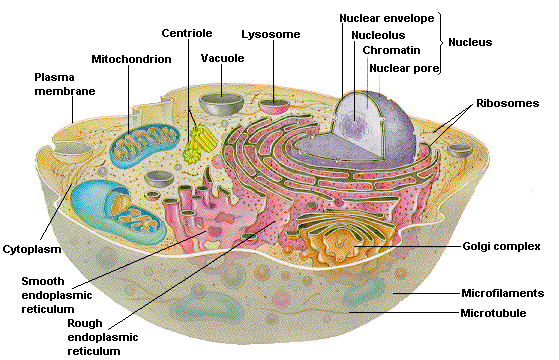Eukaryotic cell structure
Eukaryote is an organism whose cells hold complex structures enclosed within membranes. The Eukaryotes may more formally be referred to as the Eukaryota or taxon Eukarya. The defining membrane-bound structure which sets eukaryotic cells apart from prokaryotic cells is the nuclear or nucleus envelope within that the genetic material is carried. Many eukaryotic cells also contain other membrane-bound organelles like as mitochondria, the Golgi apparatus and chloroplasts. All huge complex organisms are eukaryotes involving fungi, plants and animals. The group also involves several unicellular organisms.

In eukaryotes Cell division is different from that in organisms without a nucleus. It includes dividing the duplicated chromosomes by movements directed through microtubules. There are two kinds of division procedure. In mitosis, one cell divides to produce two genetically identical cells. In meiosis, that is needed in sexual reproduction, one diploid cell having two objects of each chromosome one from each parent undergoes recombination of every pair of parental chromosomes and then two stages of cell division resulting in four haploid cells. Every gamete has just one complement of chromosomes every a unique mix of the corresponding pair of parental chromosomes.